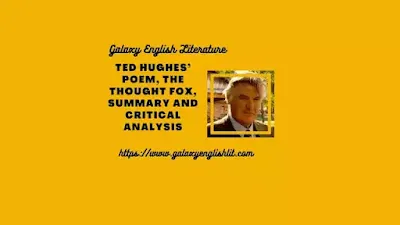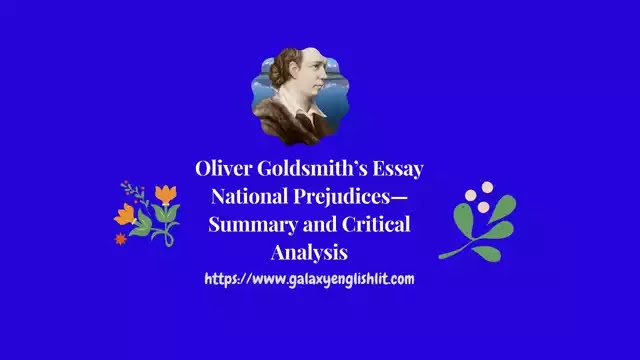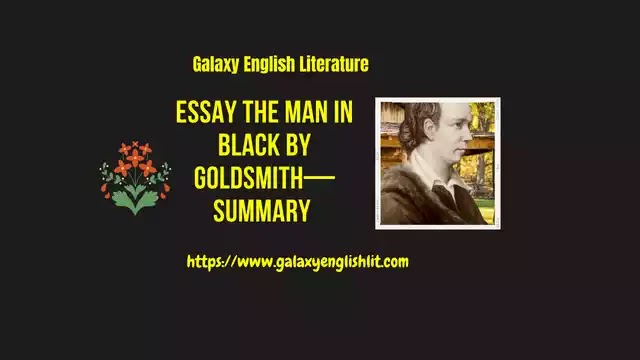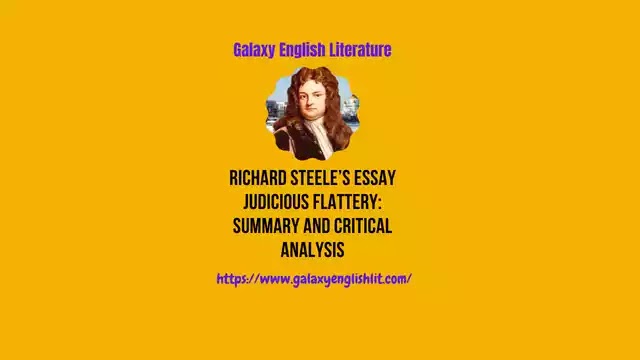Introduction of the Poem:
“The Thought Fox” is a poem about writing a poem and not at all about an animal. This poem was first published in 1957. It is an extract from Hughes Collection of poems entitled The Hawk in the Rain. This collection was judged by Marianne Moore, W. H. Auden and Stephen Spender, the best. The fox, in the poem, is the poetic energy or inspiration that comes out of darkness or figuratively from the unconscious mind of the poet. This inspiration leaves its footprints on snow, figuratively on the white blank page. The animal image is the title as well as the movement of the symbolic animal in the poem. The poem reveals Ted Hughes’ subtle artistry. The very movement is like the movement of a fox in the darkness. The rhythm and movement of the poem helps in evoking the image of the fox in the mind of the reader. There is beautiful metaphor contained in the poem.
 |
| Ted Hughes’ Poem— The Thought Fox— Summary and Critical Analysis | |
Summary of the poem:
It is midnight's time. The poet is sitting in his room all alone. He seems to be in conscious state. He tries to collect the thoughts so that he may be able to compose a poem. But it seems that he is completely devoid of poetic energy and inspiration. Just then the poet imagines that it is midnight's time of a snowy forest and he feels his presence in the forest. There is utter darkness in the forest. In such a snowy forest and utter darkness, no sign of any creature can be traced. In fact , he finds the state of desolation all around him. But he feels that some other creature is also awake at that moment. He feels the entering of something alive in his room. In the solitude and silence of the room, the sound of ticking of the clock is heard. A blank page is lying on the writing table of the poet and his fingers are moving on that paper, but due to being thoughtless, he does not know what to write. Suddenly the idea of the fox enters his empty mind and he writes a poem on it which is entitled The Thought Fox.
During midnight, the poet is sitting in his room all alone. Due to being unconscious and devoid of poetic energy and inspiration, the poet finds himself unable to collect the thoughts for composing the poem. But next time, at the same moment, he visualises a snowy forest. It appears to him that he is in the forest. There is pindrop silence. There is utter darkness out of his room. He peeps through the window and finds that no star is twinkling in the sky. Hence, he is unable to get inspiration from the stars. He feels that something is moving through utter darkness. He feels that something is coming towards him and that thing wants to disturb his solitude.
Sitting in his room at midnight, the poet wants to compose a poem. He tries to his best to pour down his thoughts on the blank paper. But he feels himself in unconscious state. He feels that he is completely deprived of poetic energy and inspiration. Then he visualises his presence in a snowy forest. He finds that the atmosphere is pervaded with utter darkness. When he peeps out through the window of his room, he finds that no single star is twinkling in the sky, but he feels that something alive is approaching towards him through utter darkness and its intention is to disturb his solitude. He perceives that a fox in the form of thought, poetic energy and inspiration is coming through the forest. In his imagination, he feels a sudden change in temperature. In the cold night, a fox's nose, delicate as snow, seems to touch a tender twig then a leaf. In fact, it is strange thing that the white snow is not visible in the dark night. The poet notices the two eyes of the fox. Two eyes of the fox shine out clearly and brilliantly in the middle of the darkness. The movement of the eyes of the fox suggests the movement of the fox.
At midnight, the poet is sitting in his room all alone with a blank paper. He wants to compose a poem, but inspiration does not dawn upon him and he feels himself in unconscious state. He imagines that the room in which he is dwelling and is waiting for the poetic energy and inspiration, is situated in the midst of the snowy forest. He feels that something alive is approaching to him. Perhaps it wants to disturb his loneliness. He feels a sudden fall in the temperature. He feels a cold touch which is very delicate like a fox smelling a twig and then a leaf. He recognizes two staring eyes of fox which are the source of inspiration. The poet is able to see very clearly the repeated movement of the eyes of the fox. As the fox moves towards him, it leaves its footprints on white snow. In other words the fox is a thought, poetic energy and inspiration and the snow is a blank white paper and the footprints are words or thoughts written on blank white paper. It means that the inspiration in the form of fox is dawning upon the mind of the poet. In this way, the poet's mind is illumined with thought. The shadow of fox seems to be lingering about the stumps of the trees. Because of having a bodiless existence, it does not have fear of anything. It shows its fearlessness and boldness while moving to poet.
In his imagination, the poet feels himself in the midst of a snowy forest where the utter darkness is pervaded. He feels that something alive is coming towards him and that thing wants to disturb his solitude. The imaginary fox which is the source of the poet's poetic inspiration keeps on moving to the poet. Now the poet sees the fox's one eye. It means that the fox's attention seems to be fixed. The one eye of the fox has an extraordinary illumination of inspiration. It makes the poet feel the presence of greenery in utter darkness. The thoughts illumined with inspiration begin to enter in the poet's mind. The faculty of poet's mind drowned in utter darkness is illumined with deep and expressive thoughts.
When the poet feels himself unable to compose a poem because of having no inspiration and thought, he visualises a snowy forest drowned in utter darkness. In his imagination he feels that a fox in the form of inspiration is approaching to him. He perceives the fox continuing to move forward. The poet thinks that the fox has determined its destination firmly and it is approaching to its fixed target. The fox in the form of inspiration like an invisible presence approaches to the poet. Then with a sudden sharp stink, it penetrates into dark hole of the poet's head. Inspiration enters the dark faculty of the poet's mind, much in the same way that a fox walking stealthily reaches its hole and then becomes invisible. In other words, the imagined presence of the thought - fox enters the poet's mind and becomes one with it and possesses him completely. The rest of the atmosphere such as the sound of ticking clock, the dark house and the loneliness remain unaffected. But as this thought fox, the inspiration enters the poet's head; it leaves the footprints on the snow white paper which the poet has been holding in front of him. The dark footprints of thought fox have now entered as black letters on the white paper in the form of a poem.
Critical Appreciation of the Poem:
Introduction:
The Thought - Fox is a poem about composing a poem and not at all about an animal. It is an extract from The Hawk in the Rain. The fox, in the poem, is the poetic energy or inspiration that comes out of darkness or figuratively from the unconscious mind of the poet. This inspiration leaves its footprints on snow, figuratively on the white blank page. In the poem, the fox is symbol of the contradictory nature of things. The scope of this symbol gradually extends from personal to universal significance. The poet in a very indirect manner sets the tone of the process by which a poem gets written. Inspiration is the most important thing for a poet. Without inspiration, he cannot budge an inch in the concern of composing a poem. The idea or thought gradually takes form in poet's mind and illumines the dark faculty of his mind. It enters as the fox enters the forest.
Thought - Content:
The poet is sitting in a lonely room in a dark night. He wants to compose a poem, but inspiration does not dawn upon him. Everything is quiet. Even the ticking sound of the clock impresses upon the poet, the darkness, the silence and the loneliness. The poet has a blank page before him and his fingers move on it. Outside it is all dark, even the stars are not visible in the sky. The imaginary fox is the symbol of the inspiration for writing poetry. It moves like a fox touching the twigs and leaves with its nose. What the poet sees are two eyes that move in the darkness and leave their footprints on the snow. Then a lame, cautious body in the form of an eye comes brilliantly and cautiously towards the room. With the stink of a fox it enters the hole of the poet's mind. The window is still without stars and it is dark and lonely. The clock confirms to tick and by now the blank page has obtained the footprints of the thought - fox in the form of a poem.
The Relation between Literal and Metaphysical Planes:
The opening lines of the poem move on two planes— literal and metaphysical. The description of the ‘I’ that imagines is on a literal level also the lonely house, dark night and silence disturbed only by the tick - tick sound of the clock, the blank paper and the poet's moving figures are on the literal level. The thought - fox is on a metaphysical plane. Also is something deeper within darkness entering the loneliness. The relation between literal and the metaphysical planes is well established. The total darkness and the vague something suggest that what the poet sees is symbol rather than something more near.
The Use of Metaphor and Images:
There is a beautiful metaphor contained in the poem. The Thought Fox is the poetic energy or the inspiration to write a poem. The inspiration comes from the dark and the dark here stands for the unconscious mind of the poet. The animal image is the title as well as the movement of the symbolic animal in the poem. A series of images can be found in the poem. The first line of the poem contains the image:
“I imagine this midnight moment's forest.”
The poet imagines that he is sitting in a forest at midnight. Then comes the image of lonely clock. After that we have blank page and the feeling that something is also alive.
“Something else is alive
Beside the clock's loneliness
And this blank page where my fingers move.”
Next the poet peeps out through the window but finds no star shining in the sky. The whole atmosphere out of this room is drowned in utter darkness, but the presence of something is felt:
“Through the window I see no star:
Something more near
Though deeper within darkness
Is entering the loneliness.”
Then comes the image of a fox's nose touching a twig and a leaf. The brilliantly concentratedly eyes of the fox from another image of the poem:
“Cold, delicately as the dark snow
A fox's nose touches twig, leaf;
To eyes serve a movement, that now
And again now, and now, and now”
Style and Language:
The language used in the poem is the language of the whole mind. The language is wakeful in all situations. He makes a skilful use of words and rhythms. The sound and the rhythm in the poem aptly capture the movement of the symbolic thought - fox as it advances towards the poet. The poem has already set neat prints upon the page before we are told that the fox sets them into the snow. The repetition ‘again now and now, and now’ captures the movement of the thought fox in the verse. The syntax fully supports the slow, lame, shadow - like movement of the thought - fox:
“Two eyes serve a movement, that now
And again now, and now, and now
Sets neat prints into the snow
Between trees, and warily a lame
Shadow legs by stump and in hollow
Of a body that is bold to come. "





